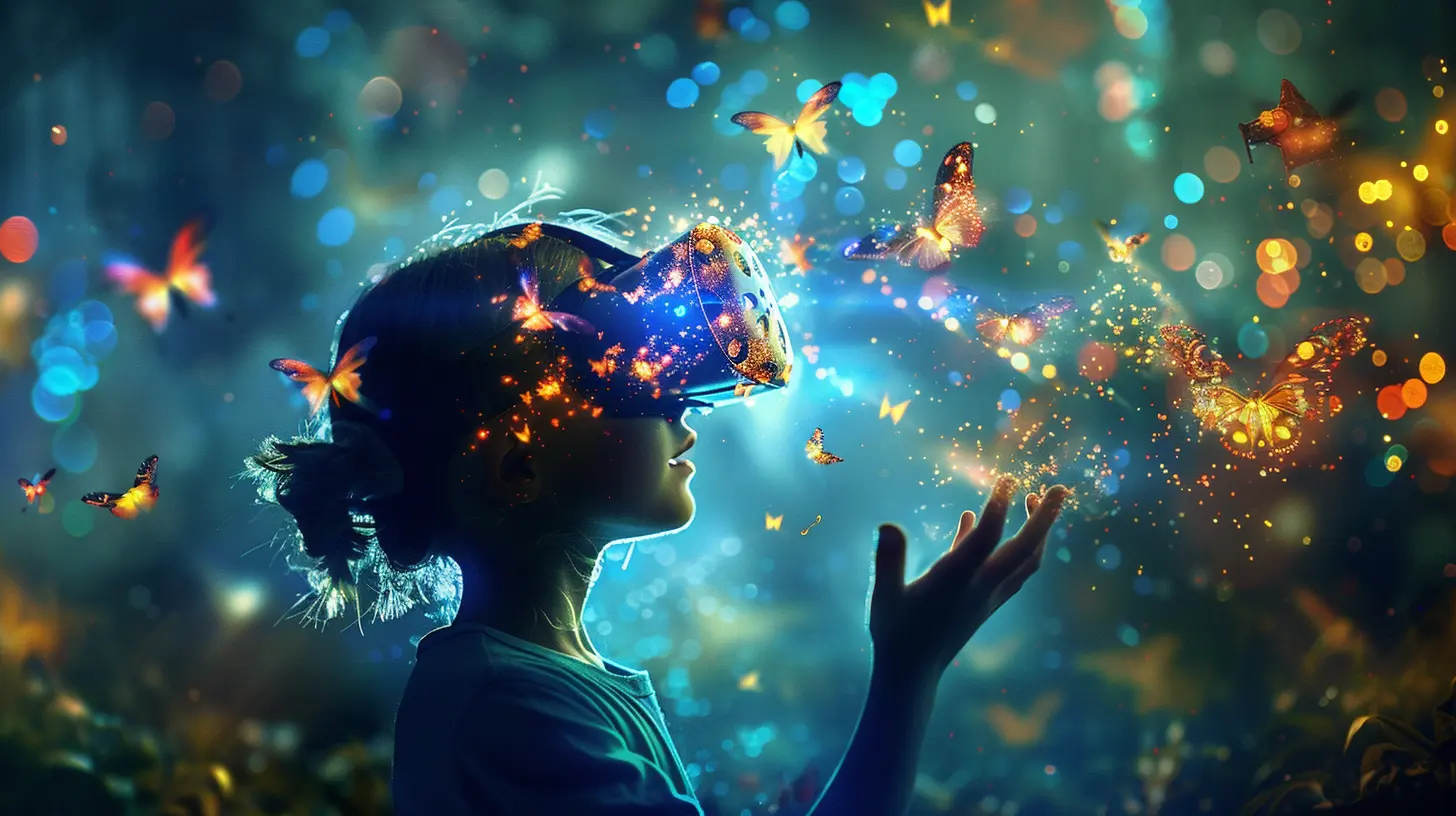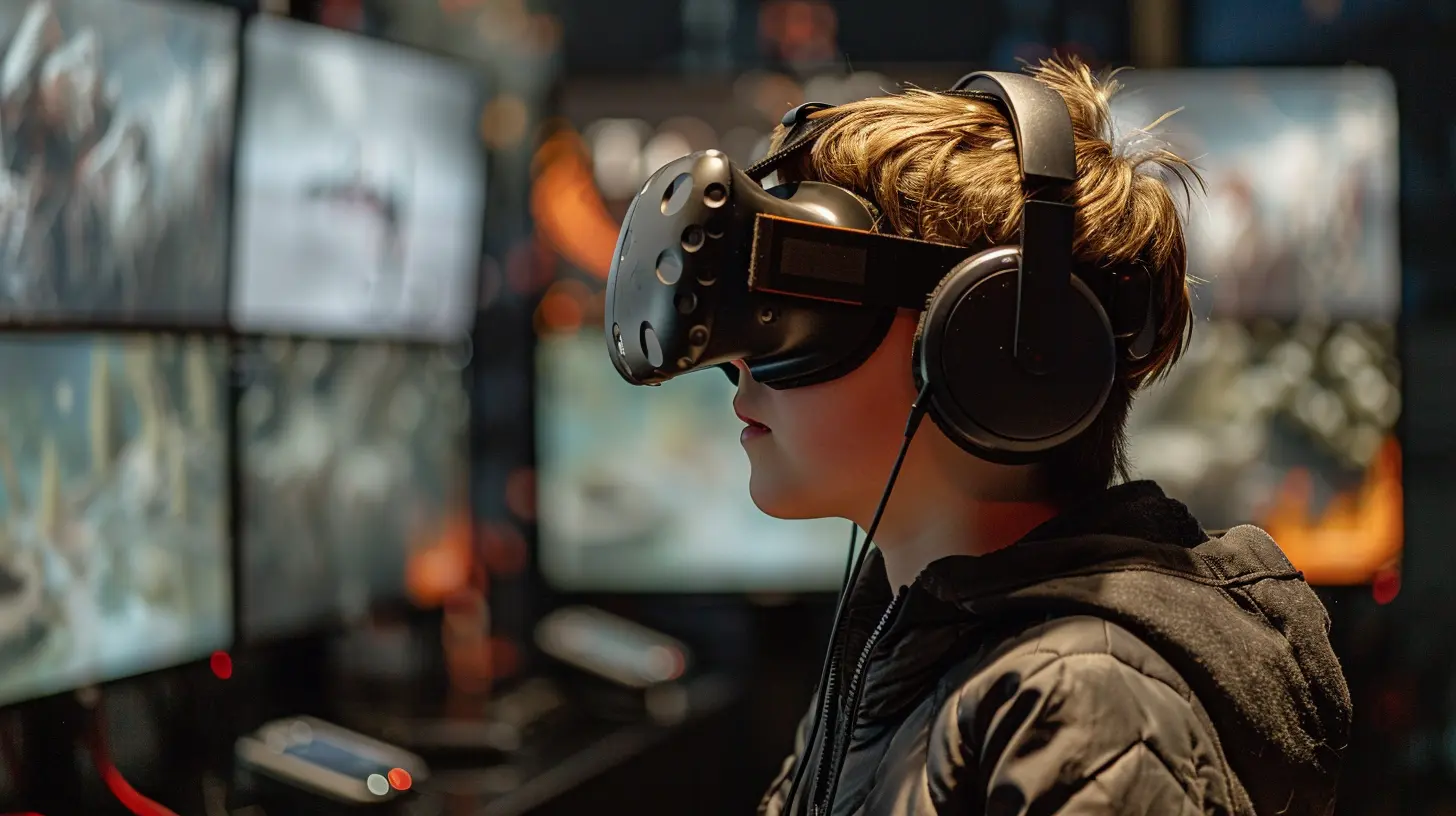How Virtual Reality Can Enhance Your Child’s Learning
24 October 2025
Technology is changing how kids learn, and virtual reality (VR) is at the forefront of this revolution. What was once considered futuristic is now a tool for transforming education. But how exactly can VR help your child learn better? Is it just another tech trend, or does it have real benefits?
Let’s dive into this fascinating world and see how virtual reality can turn ordinary lessons into unforgettable adventures. 
What is Virtual Reality?
Before we get into the benefits, let's define virtual reality. VR is a computer-generated environment that allows users to interact with a simulated world. With a headset and motion controllers, kids can immerse themselves in experiences that feel incredibly real.Now, imagine applying that level of immersion to learning—suddenly, history, science, and math become more than just words in a textbook. 
How Virtual Reality Enhances Learning
1. Making Learning More Engaging
Kids today grow up with screens everywhere—tablets, smartphones, and laptops. Traditional learning methods often struggle to compete with this digital world. That’s where VR steps in.With VR, lessons aren't just read or watched; they're experienced. Instead of reading about the solar system, kids can float through space and explore planets up close. Instead of memorizing historical events, they can witness them unfold in a virtual time machine.
When learning becomes this hands-on and exciting, retaining information becomes much easier.
2. Improving Retention and Understanding
Ever noticed how kids remember every small detail about their favorite video game or cartoon? That’s because interactive and immersive experiences are far more memorable than passive learning.Studies show that people remember 90% of what they do, compared to just 10% of what they read. Since VR allows kids to actively participate in lessons, concepts stick longer. Instead of just hearing about the water cycle, they can become a raindrop, traveling through evaporation, condensation, and precipitation.
This makes abstract concepts much easier to grasp.
3. Encouraging Curiosity and Exploration
Kids are naturally curious. Give them an opportunity to explore, and they’ll dive deep into whatever interests them. VR allows children to explore subjects beyond traditional boundaries.Want to visit ancient Egypt and walk through the Great Pyramid? No problem.
Want to examine a human heart from the inside? Strap on your VR headset.
Want to explore Mars’s surface as if you were an astronaut? You got it.
VR fosters curiosity like never before, encouraging children to keep asking why and how.
4. Enhancing Practical Skills
VR isn't just about studying facts—it’s also about developing real-world skills.- Science & Medicine: Future doctors can perform virtual surgeries before ever touching a real patient.
- Engineering & Mechanics: Kids can build and test virtual machines, learning engineering principles firsthand.
- Languages: Learning a new language? VR can simulate real-life conversations with virtual natives.
These hands-on experiences help kids build confidence in their skills before applying them in real-life scenarios.
5. Personalized Learning at Its Best
Every child learns at their own pace, and VR allows for personalized learning experiences. Unlike traditional classrooms, where everyone follows the same lesson plan, VR can adapt to an individual's learning speed and style.Struggling with math? A VR app can provide step-by-step, interactive guidance.
Excelling in science? Your child can take on advanced experiments tailored to their level.
This level of customized learning ensures that no child is left behind.
6. Increasing Motivation and Focus
One of the biggest challenges in education today is keeping kids focused. With so many distractions, it’s easy for attention spans to dwindle. But VR creates fully immersive environments, eliminating outside distractions.Imagine trying to learn about marine biology while sitting in a dull classroom versus diving into the ocean, swimming alongside dolphins. Which one sounds more engaging?
By placing kids inside their lessons, VR makes learning feel like an adventure rather than a chore.
7. Making Difficult Subjects Easier
Some subjects are just hard, no matter how they’re taught. Math, physics, chemistry—they can feel abstract and confusing. But VR changes this by turning difficult concepts into visual and hands-on experiences.- Geometry: Instead of drawing 3D shapes on paper, kids can walk around them.
- Physics: They can adjust gravity and test how objects fall in different conditions.
- Chemistry: They can mix virtual chemicals safely, watching reactions unfold without real-world risks.
When kids see and interact with these subjects, they don’t just understand them better—they start to enjoy them. 
Addressing Concerns About Virtual Reality in Education
Of course, no technology is perfect, and parents may have concerns about introducing VR into learning. Let’s address some common worries:1. Too Much Screen Time?
Yes, screen time is a valid concern, but VR is different. Unlike passive screen time (watching videos or playing mobile games), VR learning is active and engaging. The goal isn’t endless hours of use, but meaningful, high-quality learning experiences.2. Cost of VR Equipment?
VR headsets used to be outrageously expensive, but prices have come down significantly. Many schools and libraries offer VR learning tools for free or at a low cost. Plus, as technology advances, affordability will continue to improve.3. Motion Sickness?
Some kids may feel dizzy or uncomfortable in VR. However, newer VR headsets are designed to reduce motion sickness, and taking short breaks helps prevent any discomfort.
How to Get Started with VR for Your Child
Convinced that VR could benefit your child’s education? Here’s how to begin:1. Choose the Right VR Device
Some popular VR headsets include:- Meta Quest 2 – Affordable, wireless, and packed with educational apps.
- HTC Vive – Offers high-quality VR experiences, though pricier.
- PlayStation VR – Great for educational and entertainment use.
2. Find Educational VR Apps
Look for apps that emphasize learning and creativity, such as:- Google Expeditions – Virtual field trips around the world.
- Tilt Brush – A creative tool for 3D painting.
- Titanic VR – An interactive journey through history.
3. Set Limits & Monitor Usage
Like any technology, moderation is key. Balance VR learning with traditional study methods, outdoor play, and social activities.Final Thoughts
Virtual reality is more than just a gaming accessory—it’s a powerful learning tool that can make education exciting, interactive, and effective. From exploring the universe to stepping back in time, VR opens doors to experiences that were once impossible.As technology continues to advance, embracing VR in education could give your child an edge in learning. So why not take advantage of this incredible tool? After all, learning should feel like an adventure, not a chore!
all images in this post were generated using AI tools
Category:
Tech And KidsAuthor:

Steven McLain
Discussion
rate this article
1 comments
Xeno Patel
Great insights on innovative learning!
October 28, 2025 at 3:31 PM

Steven McLain
Thank you! I'm glad you found the insights valuable.


